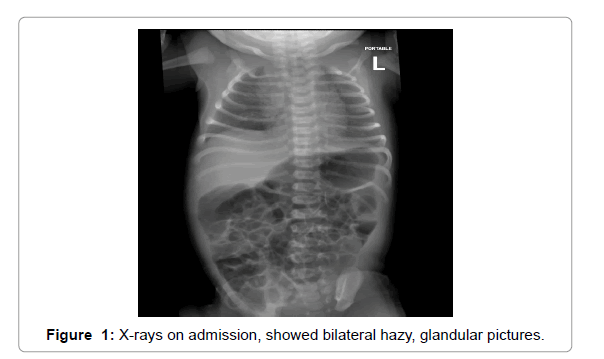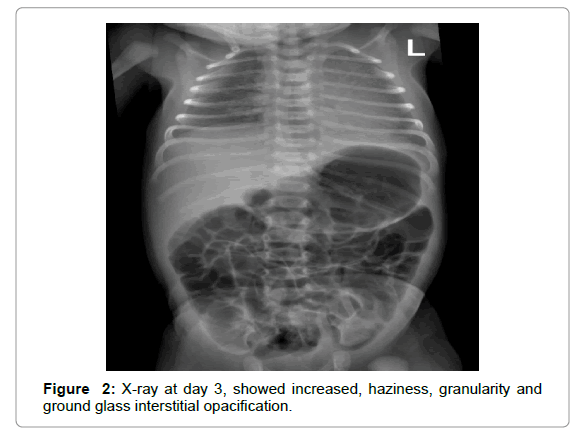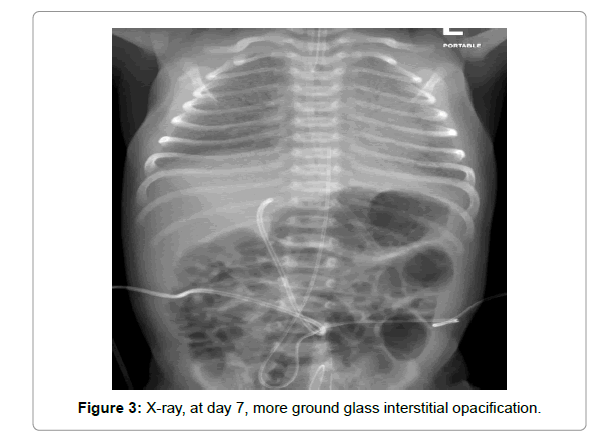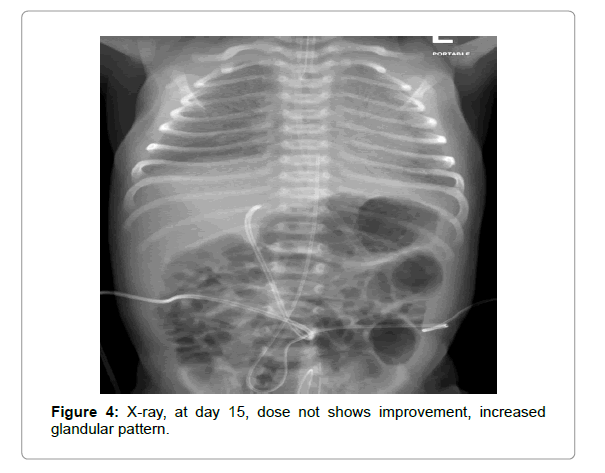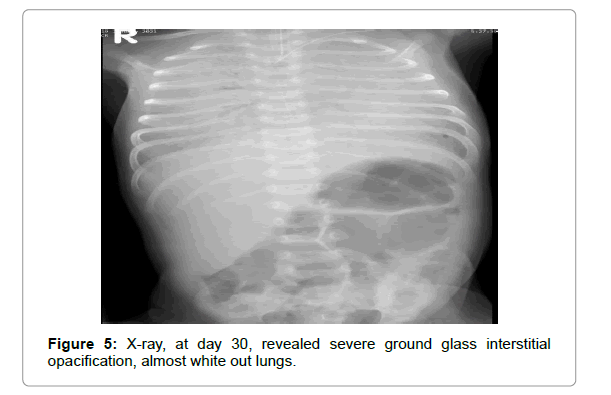Surfactant Metabolism Dysfunction Type 3 (SMDP3)
Received: 14-Jun-2021 / Accepted Date: 28-Jun-2021 / Published Date: 05-Jul-2021 DOI: 10.4172/2572-4983.s7.1000002
Abstract
Surfactant (surface-active-agent) is a compound of phospholipids and proteins which are synthesized and secreted into the alveolus by type II epithelial cells, where it functions to decrease surface tension, maintaining alveolar expansion, to facilitate pulmonary compliance.
Surfactant Proteins (SP) A, B, C, D represent around 8% of total components, but has vital role in optimizing rapid adsorption and spreading of phospholipids. ATP-binding cassette sub-family A member 3, protein that encoded by ABCA3 gene, which located in human chromosome 16p13.3, is synthesized in endoplasmic reticulum and migrated to lysosomal-derived organelles of alveolar type II cells, formally known as lamellar bodies. Once accumulate into the membrane, ABCA3 can direct surfactant phospholipid into the lumen of lamellar bodies and create tight packed of surfactant lipids and proteins. Mutation of the ATP-binding cassette transporter Gene ABCA3 cause failure in lamellar body synthesis and result in decreased production of surfactant, along with respiratory distress syndrome, and fatal respiratory failure.
Keywords: p>ABCA3; ATP-binding cassette transporter; Centrosome; Dallah Hospital; NICU
Description
We report neonate with Surfactant metabolism dysfunction type 3, with critical acute respiratory distress syndrome, accompanied by respiratory failure in Riyadh, KSA. A 25-year-old gravid a two, Para one woman at 40 weeks gestation, with regular antenatal care, and normal prenatal screening, without chronic illness. The female infant is vigorous, and Apgar scores were 8 and 9 at 1 and 5 minutes of life respectively, baby transfer to nursery section in good condition with a birth weight of 3000 g. First degree relative consanguineous parents, they had first sibling born at 27 weeks gestation, who was Neonatal Intensive Care Unit(NICU) graduate, no family history of similar condition. At the age of two hours, the infant shifted to (NICU) secondary to respiratory distress. Respiratory rate was 70 per minute, oxygen saturation 86% on Bubble CPAP, temperature 36.5, tachypneic, chest recession and bilateral diminished air entry. No dimorphic features, heart sounds are audible in all auscultator areas, loud second heart sound is detected in pulmonary component, plus soft murmur, unremarkable neurological and abdominal examination. On admission, the infant connected to non-invasive ventilator support for 58 hours, then intubated and connected to mechanical ventilator due to desaturation beside increase oxygen requirement. During intubation, a fresh blood noticed in ET tube. Radiograph shows granular, hazy, ground-glass interstitial pacifications, Initial therapeutic dose of surfactant was given and followed by multi doses, which gave a little pit of improvement that allowed to keep patient out of invasive mechanical ventilator for 5 days. The infant has been kept between conventional and high frequency ventilators and death was announced by day 43 of life.
Investigations
➢ Initial laboratory evaluation included a white blood cell count of 17.98 (× 10 3/μL), with 21% neutrophils, 40% lymphocytes, 8% monocytes, hemoglobin 21(g/dl), platelets 241, and CRP 21.98 (Tables 1 and 2) showed patient criterion, laboratory values and work up during hospital course (Figures 1-3).
| Imaging | |
| Serial echocardiography | |
| ECHO | Moderate ASD2, small PDA and PPHN |
| CT chest | Bilateral diffuse ground glass attenuation throughout lungs field |
| Brain Ultrasound | Unremarkable |
| Abdomen and pelvis U. S | Unremarkable |
| Serials X-ray | Granular, hazy, ground-glass interstitial opacifications |
| Newborn screening | |
| Tandem Mass | Unremarkable |
| Gene study | |
| Centoxome | Positive-homozygous pathogenic variant in ABCA3 gene |
Table 1: Work up during hospital course.
| Patient criteria | |
| Gestational age | 40 |
| Mode of delivery | NSVD |
| Resuscitation at delivery | None |
| APGARS (1 and 5 min) | 8 and 9 |
| Gender | Female |
| Age at presentation | 2 hours |
| Age of death | 43 days |
| Laboratory values | |
| 1 White blood cells (10 3/µL | 17.9 |
| Neutrophils (%) | 52.4 |
| Lymphocytes (%) | 31.2 |
| Platelets (x 10 3/µL) | 241 |
| Culture | |
| Blood | Negative |
| Nasal swab | Negative |
| Urine | Negative |
| ETT aspirated secretion | Negative |
| Stool | Negative |
| Reparatory viral Panel(PCR) | Negative |
| CRP | 21.9, 33.2, 52.5, 12,2, 7.5 |
Table 2: patient criteria, laboratory values and work up.
➢ Genetic study: blood sample sent to Germany, cent gene labs showed: A homozygous pathogenic variant was identified in the ABCA3 gene (Figures 4 and 5). The diagnosis of autosomal recessive surfactant metabolism dysfunction type 3 is confirmed.
Discussion
The genetic disorders of surfactant metabolism dysfunction are caused by mutations in genes encoding proteins which essential for both function and creation of pulmonary surfactant. It’s rare disorders that may cause sporadic or familial lung disease, with clinical presentations ranging from neonatal respiratory failure to childhood or adult-onset interstitial lung disease. Beside the major surfactant proteins, additional proteins including ABCA3 (member A3 of the ATP binding cassette family of proteins), the TTF-1 (Thyroid Transcription Factor 1) are also important to produce functioning surfactant [1,2].
Surfactant Metabolism Dysfunction-3(SMDP3) is caused by homozygous or compound heterozygous mutation in the ABCA3 gene and appears to be the most common cause of genetic surfactant dysfunction in humans [3-5]. Mutations which related to loss or functional defect of ABCA3 protein are inherited in an autosomal recessive pattern [MIM #610921]. Two types of mutation are known, (Type1 mutation), which related to absent, decreased protein expression, or abnormal trafficking, while (Type 2 mutation) associated with diminished functional activity of ABCA3 protein [6,7]. As supported by animal and human studies, severe neonatal form of the disease is thought to be result from functional surfactant defect [8,9]. In humans with ABCA3 mutations, lack amounts of mature SP-C and altered processing of pro SP-B to SP-B have been observed [10].
ABCA3 mutations vary in its presentation and severity, according to the part on the genotype, as shown in a series of 185 individuals with various ABCA3 mutations. It is found that the most severe phenotype with (respiratory failure at birth, leading to death or lung transplantation by one year of age) was found in 100 percent of those with mutations predicted to preclude ABCA3 expression on both alleles, as compared with 75 percent of those with genotypes of either null/other or mutations [11].
The carrier frequency in the population with ABCA3 mutation has been estimated to be between 1 in 33 to 1 in 70 individuals, which predicting a disease incidence of between 1 in ~4400 to 1 in~20,000 [12].
Surfactant dysfunction due to mutations in ABCA3 has a more variable phenotype, depending in part on the genotype. The initial presentation with a severe RDS-picture in a full-term neonate. The resultant disease is progressive may leads to early death in some infants, while other infants may stabilize or improve. Patients with ABCA3 mutations may also present later in infancy or childhood. Cough, tachypnea, hypoxemia, gastro esophageal reflux, and failure to thrive are frequent features [13].
Conclusion
Full term babies with progressive respiratory distress, not responding to exogenous surfactant and ventilation support and highly consanguinity, increase vigilance and a high index of suspicion of congenital surfactant deficiency.
Recommendation
We recommended parenteral carrier testing to confirm homozygosis of the variant in place of compound heterogeneity for large deletion.
Acknowledgement
We are indebted to NICU team, colleagues, involved subspecialty departments (Pulmonology, Cardiology, Radiology) and nursing staff, for their unlimited helpful.
References
- Yamano G, Funahashi H, Kawanami O, Zhao LX, Ban N, et al. (2001) ABCA3 is a lamellar body membrane protein in human lung alveolar type II cells. FEBS Lett 508: 221-225.
- Hamvas A, Heins HB, Guttentag SH, Wegner DJ, Trusgnich MA, et al. (2009) Developmental and genetic regulation of human surfactant protein B in vivo. Neonatology 95: 117-124
- Brasch F, Griese M, Tredano M, Johnen G, Ochs M, et al.(2004) Interstitial lung disease in a baby with a de novo mutation in the SFTPC gene. Eur Respir J 24: 30-39.
- Shulenin S, Nogee LM, Annilo T, Wert SE, Whitsett JA, et al. (2004) ABCA3 gene mutations in newborns with fatal surfactant deficiency. N Engl J Med 350: 1296-1303
- Kroner C, Wittmann T, Reu S, Teush V, Klemme N, et al. (2017) Lung disease caused by ABCA3 mutations. Thorax 72:213.
- Brasch F, Schimanski S, Mühlfeld C, Barlage S, Langmann T, et al.(2006) Alteration of the pulmonary surfactant system in full-term infants with hereditary ABCA3 deficiency. Am J Respir Crit Care Med; 174:571.
- Matsumura Y, Ban N, Ueda K, Inagaki N (2006) Characterization, and classification of ATP-binding cassette transporter ABCA3 mutants in fatal surfactant deficiency. J Biol Chem 281: 34503-34514.
- Ban N, Matsumura Y, Sakai H, Sasaki M, Arai H, et al (2007) ABCA3 as a lipid transporter in pulmonary surfactant biogenesis. J Biol Chem 282: 9628-9634.
- Germany TH, Moxley MA, White FV, Dean M, Hull WH, et al. (2006) Surfactant composition and function in patients with ABCA3 mutations. Pediatr Res 59: 801-805.
- Bullard JE, Wert SE, Whitsett JA, Whitsett JA, Dean M, et al. (2005) ABCA3 mutations associated with pediatric interstitial lung disease. Am J Respir Crit Care Med 172: 1026-1031.
- Wambach JA, Casey AM, Fishman MP, Wegner DJ, Wert SE, et al. (2014) Genotype-phenotype correlations for infants and children with ABCA3 deficiency. Am J Respir Crit Care Med; 189: 1538-1543.
- Wambach JA, Wegner DJ, Depass K, Heins H, Druley TE, et al. (2012) Single ABCA3 mutations increase risk for neonatal respiratory distress syndrome. Pediatrics 130: e1575.
- Deutsch GH, Young LR, Deterding RR, Fan LL, Dell SD, et al. (2007) Diffuse lung disease in young children: Application of a novel classification scheme. Am J Respir Crit Care Med 176:1120-1128.
Citation: Mohamed YA, Sharif AH, Saadi MMAL, Mona M (2021) Surfactant Metabolism Dysfunction Type 3 (SMDP3). Neonat Pediatr Med S7:002. DOI: 10.4172/2572-4983.s7.1000002
Copyright: © 2021 Mohamed YA, et al. This is an open-access article distributed under the terms of the Creative Commons Attribution License, which permits unrestricted use, distribution, and reproduction in any medium, provided the original author and source are credited.
Select your language of interest to view the total content in your interested language
Share This Article
Recommended Journals
Open Access Journals
Article Tools
Article Usage
- Total views: 2710
- [From(publication date): 0-2021 - Oct 06, 2025]
- Breakdown by view type
- HTML page views: 1861
- PDF downloads: 849

